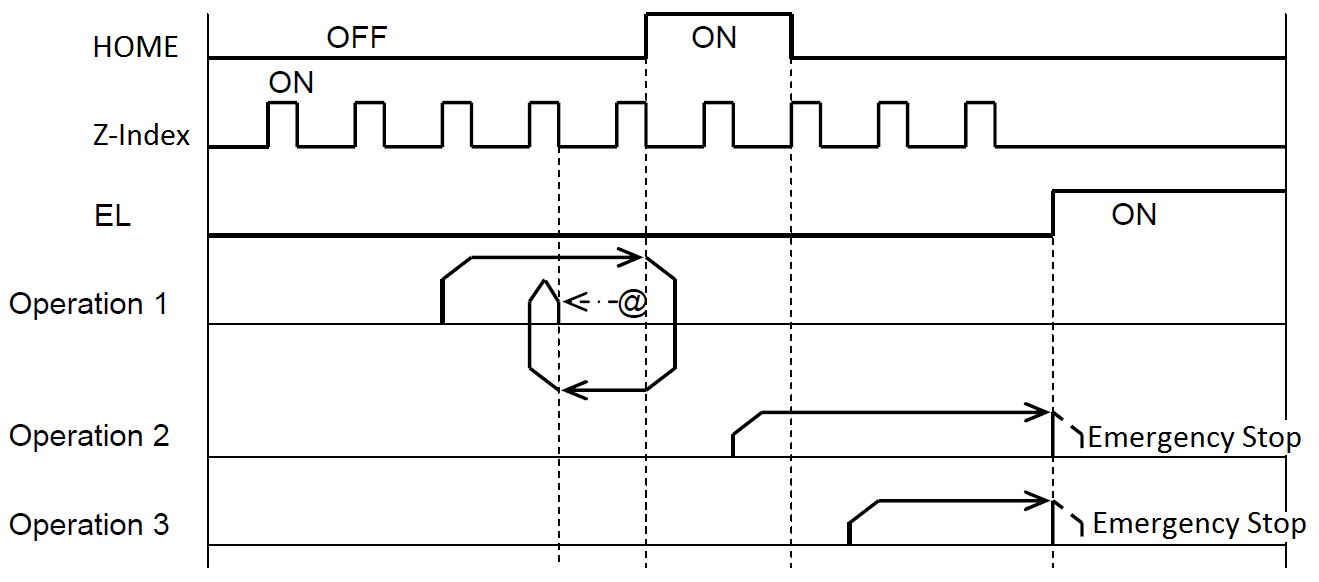A.12 Homing Mode 11
In homing mode 11, the home limit switch is used to initiate a deceleration. The operation then continues with a fast move in the reverse direction until the Z-index pulse is encountered, where a quick index reverses motion back to the position where the Z-index pulse was encountered.
- This is the similar to Homing mode 5 except it returns to the encoder 0 point, after the home limit is encountered. If your system does not have an encoder, or the encoder pulse count is different from the motor pulse count, it is suggested that you use Homing mode 5 instead, as Homing mode 11 will not function properly.
|
Homing Mode |
Home Limit |
End Limits |
Z-index |
Slow Down |
Approaches Home at |
Direction to Trigger Zero |
Ending Point |
|
|
High Speed |
Low Speed |
|||||||
|
Mode 11 |
● |
|
● |
○ |
H |
|
Dir of Home |
Zero |

Operation 1:
- Homing operation is started, accelerate from LSPD to HSPD, then decelerate as the home limit switch is encountered.
- Reverse direction, accelerating from LSPD to HSPD, then decelerate when specified number of Z-indexpulses is encountered (ZCNT), zero position is set.
- Start a zero-point return move to the position where the Z-index pulse was encountered, accelerating from LSPD to HSPD then decelerating and stopping at 0 position.
- ERC pulse is sent.
Operation 2:
- Homing is started while home input is activated.
- Acceleration from LSPD to HSPD.
- End limit is encountered, immediate stop.
Operation 3:
- Homing is started moving away from the home input switch.
- Acceleration from LSPD to HSPD.
- End limit is encountered, immediate stop.
Note: For homing modes 9 – 12, encoder feedback is required. When using a stepper motor and homing with modes 9 – 12, an encoder is required and the command pulse count and encoder pulse count must be equal.
< Previous Chapter | Topic Home | Home | Next Chapter >
